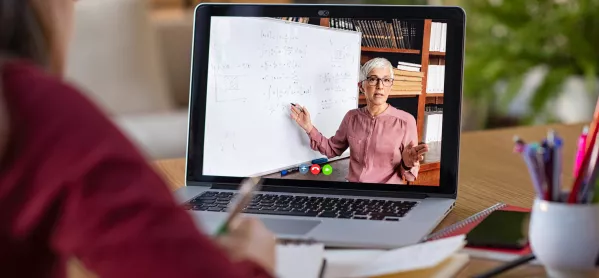After 12 weeks of online teaching here in Hong Kong, my colleagues and I have experienced a pretty steep learning curve when it comes to using instructional technology.
We have become experimental, taking more risks than ever before.
In pursuit of our goal of maintaining high-quality teaching and learning experiences in this new virtual environment, we’re also finding playful and innovative ways to engage and motivate our learners.
Students have become more responsive and proactive, even the quiet ones, communicating more effectively and telling us what they need. They are gaining independence, finding ways to solve problems, collaborate and support each other.
There seems to be something about this virtual space that is changing us and changing our students.
But we know that learning is contextual for teachers and students.
So how can we ensure that the positives of teaching in a virtual space are not lost when we return to the physical one?
Professional potential
As far back as 1995 research already proved that instructional technology had enormous potential. Additional research, however, showed that obstacles such as teacher openness to change, professional development and strength of leadership stood in the way of implementation.
This, in part, led the International Society for Technology in Education (ISTE) to develop standards for educators and challenged us “to rethink traditional approaches and prepare students to drive their own learning”.
During lockdown, we have experienced how a purposeful use of technology can help students to achieve learning goals and transform them from passive to active learners.
We’ve glimpsed the magic that can happen when we empower students to use technology “actively as creators, collaborators and problem solvers”.
As we get ready for schools to reopen, here are five things we should keep:
Whole-school planning
We should commit to the integration of technology into teaching and learning, embedded in a supportive and collaborative approach. That means creating a coaching culture that meets teachers where they’re at, helping them to use technology effectively to achieve personal goals. We could also employ instructional technology coaches and internal professional learning networks to share ideas and inspiration.
Professional development
Training should move beyond simply enhancing activities to transforming them. Technology is part of how students learn about the world, so our skills as educators in combining subject knowledge with pedagogical knowledge are no longer enough. We now need to understand how we can effectively use technology to achieve learning outcomes.
Learner agency
Let’s increase motivation and engagement by giving students control over their learning. We can use technology to enable student choice and self-pacing, allowing students to develop independence. The best outcomes arise from using technology with others, so we should emphasise collaboration.
The feedback cycle
Let’s keep using screencasting to explain tasks, demonstrate or give instructions, providing success criteria, skills and strategies, and have students use it to reflect and set goals. We can personalise feedback, using commenting tools such as video and audio feedback and use digital platforms to support peer feedback. Quizzes can be used to check for understanding and polls or surveys can offer feedback from students, promoting student voice.
Creativity and playfulness
We should use what we’ve learned to bring blended and flipped learning approaches into our classrooms. Let’s incorporate elements of gamification such as learning quests, achievements, levelling up and badges.
We can channel students’ creativity, too, challenging them to create films, animations, infographics or podcasts to show their learning and develop their digital literacy and citizenship.
Let’s build on this momentum to create a truly 21st-century education that sees technology not as an optional extra but as an equal part of what it means to be a truly great teacher.
